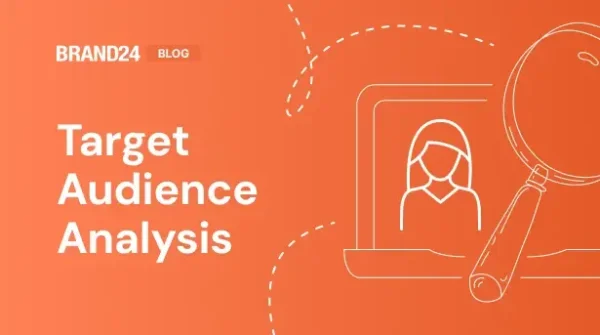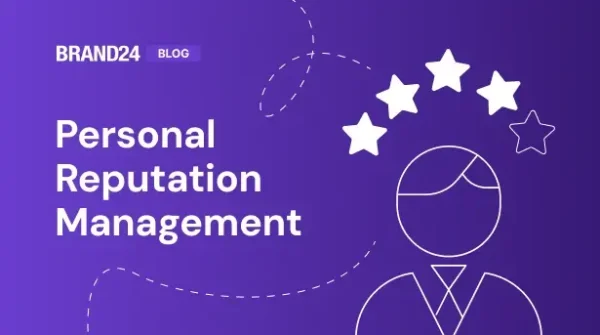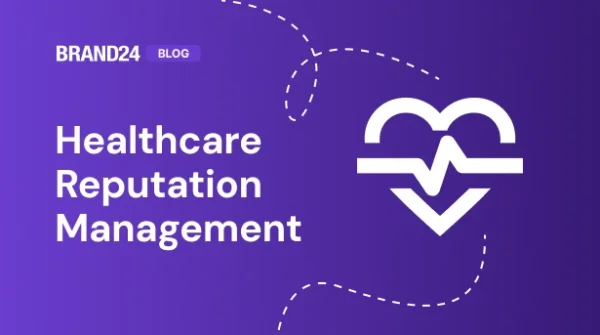A Bit Too Polite: 13 Good Practices for Building Customer Relationships
One of the the things I get asked about the most is building relationships with customers. Since we aim to run Brand24 with transparency, I thought I’d share our internal guidelines for customer service.
I’m sharing them in the same form as I would with our team. Usually I’d send it in an email to all new hires, but we also have it in a Google Doc linked from the main customer service channel on our Slack.
Here’s a list of guidelines that I’d really like you to take to heart.
I just want to emphasize that you shouldn’t apply them as means to an end. We’re not doing this because we crunched the numbers and the numbers told us this would increase our conversion. We apply these guidelines because they should be the standard for how we act. Besides, this is why our customers are happier, and if 7 years of building Brand24 taught me anything, it’s that the good you do comes back to you. I know, it sounds cheesy, but it’s the truth!
Our motto: A bit too polite!
Let me explain. It may seem that being too polite is too much, right? Maybe. But let’s remember that each one of us has a different standard for what they consider polite. Moreover – that standard changes depending if we’re the customer or the brand in the brand-customer relation.
That’s why I think it’s safest to be “a little too polite” for our personal standards. I know from experience that the other party will usually consider it just “polite enough.”
1. The power of thank you and I’m sorry.
Not many people appreciate the value of the words thank you and I’m sorry. Maybe you find them trite and unimportant, because in the late capitalism it’s all about the discount and hard gains, not chit-chat. Right?
Wrong.
Those two phrases have gigantic power. Thanks to them we build much more lasting relations with potential and current customers. Using these words when the customer has a problem with our tool, is especially important. With missing data, spammy results, or worse. The problem is always our fault! Even if the customer configured the tool wrong, or he forgot to set up event monitoring and wants to add it afterwards – it doesn’t matter. It’s always our fault!
Because the problem was either a core feature, or confusing interface that made the customer think the tool worked in a different way than it did. It’s always our fault.
I know that some customers are, to put it mildly, difficult to talk to. But let’s be professional and unless they start insulting our families, let’s approach absolutely everyone with politeness and understanding.
2. Selling without selling.
I’m a big fan of selling without selling. If that sounds silly, let me explain. It’s about having a conversation with a customer and finding out what they need. Asking about his or her problems and eventually – offering the tool that solves those problems. You can read more about researching customer needs here.
Selling without selling is a model where we don’t reach out to customers with “Hey, can I interest you in a kick-ass tool that does this and that?” It’s about asking various questions, like: “How are you handling web monitoring?” or “Are you following opinions about Samsung online?” The most effective of my ‘sales’ emails include a snippet of data – links to a few online mentions about the recipient. This way, I’m the one letting them know about a problem – lack of immediate access to those kinds of mentions. And of course, I end up offering the solution to those kinds of problems.
In those messages avoid using words like purchase, offer or pricing. The goal of a salesperson should be understanding the customer’s needs, not shoving a subscription down their throat.
This is why it’s so effective to recommend tests that accurately show the customer’s needs. Only then we can move on to talking about subscriptions, customized according to the customer’s needs.
3. Let’s build informal relations.
It’s really important to me that we build lasting relations through showing the human side of our business. Our relationship with the user should be more like a patient-doctor dynamic than salesperson-customer. I want our customers to see you as more than a company name or address. I understand that not everyone wants to mix personal and professional life. I respect that. But this is why we have Linkedin, where a lot of professionals from our line of business are already registered. So after talking to a prospective client – and definitely to a paying client – send them a connection request on Linkedin. This will come in handy in the future, because the contacts you will make at Brand24 will stay with you forever!
Informal relations can also be built over email. Now, this is harder to do in a way that doesn’t seem stiff. Here’s an example: a popular clothing brand is interested in a B24 account. In the email with their access info for a trial account I mention that I’m a hardcore fan of their brand and everything I’m wearing right now comes from their store (and I wasn’t in just my underwear). Everything I wrote was true – this isn’t BS or sucking up. It’s how I started a conversation about the sales volume in their store on weekends. We talked about things completely unrelated to online monitoring. That conversation strengthened our relationship. Thanks to that conversation, the customer spent a little more time on trying to understand the value of the tool and how it could generate even more value than that!
4. Try to reach customers via unconventional channels.
Let’s be real: everyone is sick of emails.
For me, communicating via Facebook Messenger or Linkedin is usually much faster, more practical and clearer. A lot of the times, a user who completely blew off my emails replied to me on Messenger after 5 minutes. The effect is always the same and always positive. If there is a problem – you have to go the extra mile. Not only fix it, but also clearly show how much you care about it and the customer’s satisfaction.
5. Speak the language of benefits.
Our – or more precisely, my – big problem in the first years of Brand24, was speaking the language of features and buzzwords – handy phrases that “sound cool.” Like “social media monitoring” or “business analytics” or “social intelligence.” Sounds beautiful. Looks even better on the website.
The only problem is, 90% of people have no idea what we’re on about. A lot of the times, they even nod their heads because they don’t want to seem ignorant. But most of them have no clue what’s behind those fancy words. And that’s not surprising. I’ve sat through dozens of sales pitches of startups and services – after a long time spent with the person who’s pitching, I still have no clue what they’re actually doing.
So it’s always best to be clear and accessible in how we speak. In case of sales – speak the language of benefits. Which means we don’t say that our tool is meant for managing the online reputation of a brand. We say: This tool will let you instantly receive negative and positive opinions about your company, thanks to which you can prevent a branding crisis or strengthen your positive image.
6. Be flexible.
By default, we offer trial accounts with fixed parameters. But it’s good to point out that we’re flexible and we can extend the trial for as long as the customer needs it. We’re also flexible in increasing the account limits and other parameters. That’s another way to build more lasting relationships, but most of all – to let the user understand the value of our tool. That’s the main point.
Let’s remember that we’re not here to push people to buy a subscription, because that’s the fastest way to make them stop using the tool. We want the users to understand how important online monitoring is in everyday operations of their company.
Let’s also emphasize that the packages listed on our website are not the only options we offer. Let’s communicate aggressively that those are just building blocks that you can use to make any custom subscription you need.
7. Be helpful.
There was a time when my email footer said “In case of any questions, I’m available at any time.” Right now I don’t talk to customers as much, so it’s not that important. But you need to use any opportunity to reassure the customer that you’re there to help! Especially that not many customers use that help, and even less will do after 6pm. Nevertheless, knowing that help is available is super-important to them.
Aside from that, let’s be proactive in offering help in any way possible. We can create a project for them, help solve this or that problem. We’ll hand-hold them through any process until that “a-ha! moment” when they begin to understand the value we give.
8. Smile! 🙂
This is not just about face-to-face meetings. You can smile through email. With emoticons, gifs, etc. If you have a chance – use them. This may sound awfully philosophical, but the world would be a better place if people smiled more often.
Of course, you can’t use emoticons when you’re apologizing for something serious. That would ruin the effect of saying “I’m sorry.” It’s important to show we’re not pretending to be sorry, that we’re doing whatever possible to improve the system, and ourselves. Remember that people can’t see you when you type emails or messages on chat. That’s why it’s “safe” to smile and add emoticons by default.
9. Get to the point.
Do you know what’s the most rare resource for people in our business? Time.
Time that we need to respect. Especially when trying to get prospective customers interested – the key is being concise. Nobody is gonna read multi-paragraph essays in which we eloquently argue our point. To new customers, we send 2-3 simple sentences and optionally a few links (sample of the data we offer). Just to spark interest.
Here are two guides on how to write emails to customers, brand ambassadors, influencers, web celebrities, etc.:
http://bit.ly/bebrief and most importantly: http://www.slideshare.net/HubSpot/how-towriteemailspeoplewanttorespondto
Conciseness is also really important in building customer relationships: be clear and to the point when you explain the problem with their project.
10. Don’t be afraid to admit mistakes, don’t be afraid to apologize!
Every tool has merits and flaws. Being aware of our tool’s flaws and being honest about them makes us look good to the user. Let’s be confident. Let’s prove how the pros of the tool outweigh its cons. And emphasize that we’re working on fixing the flaws.
11. Let’s be proud of Brand24’s achievements, but also – let’s be humble.
We are the leading monitoring tool. We have thousands of customers from 50 countries. We collect almost 2 billion of new mentions every month. Those are big achievements. Let’s be proud of them, but let’s also know our place.
There are companies in Poland that grow faster or have bigger customer portfolios. Being a leader doesn’t mean we can rest on laurels. If you’re not going forward – you’re staying behind. We need to constantly think about improving our product and our communication – about always improving the value we offer.
12. Include me in difficult conversations.
In case of bigger problems or fuckups – include me in the conversation immediately, so I can apologize personally. It’s really important to me to – no matter how busy I am – be close to the users and be aware of the problems we solve, as well as the problems that our tool has.
13. Going the extra mile.
Sometimes it pays off to do something special for a customer. One time, we got an email to help@brand24.com asking when they could book a flight to Tunisia. Michura replied, totally professionally, that even though we don’t deal with those kinds of requests, he prepared a complete guide on how and when to best book a flight to Tunisia.
Another example: some time ago, somebody asked Mick to recommend a good movie screening in Lagos, Nigeria. Mick did super-quick research and sent a comprehensive answer, winning the user’s love.
You can find more stories like this here. My favorite is the one about a teddy bear that was left at a hotel by a kid. The parents told the devastated kid that his teddy bear just decided to stay for longer vacation. The hotel staff supported their story with photographic evidence – they sent photos of the teddy bear sunbathing by the pool, relaxing at spa, etc. Overall, having a good time.
Stories like this work on two levels. First, the customer who experiences this kind of treatment will stay with us forever. Second, it’s a story we can share online and generate feel-good buzz around our brand.
As I said above – I would like us to build this list together, to add more good practices. So, if you have other ideas on how to build stronger relationships with customers – share them! 🙂
Related articles

![What is YouTube Engagement and Why is it Important? [Guide]](https://brand24.com/blog/app/uploads/2025/07/youtube-engagement-1-600x335.webp)
![Brand Reputation: Strategy, Tips & Guide [2025]](https://brand24.com/blog/app/uploads/2024/05/brand_reputation-600x335.webp)


